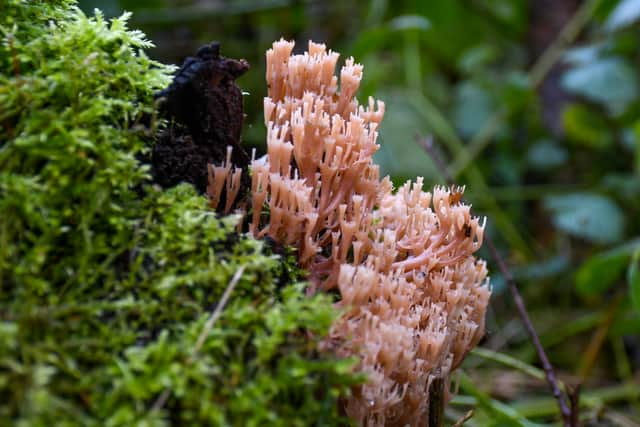Candelabra coral: 'Fabulous' fungus so rare it was once thought to be extinct in UK spotted in Kent
and live on Freeview channel 276
A spectacular type of fungus so rare it was once thought to have gone extinct in the UK has been spotted in Kent by experts on a mushroom hunt.
The candelabra coral - also known as crown-tipped coral fungus due to the crown-like shape of its ‘branches’ - was found in the Kent village of Addington by ecologist Rhianna Dix while on a fungal foray. This is only the third time it has been found in the UK after more than a century without a sighting, but it is found more frequently in North America - where it usually grows on decaying wood.
Advertisement
Hide AdAdvertisement
Hide AdIt was thought to have become extinct in the UK, with no records in the entire 20th Century - until it was found growing in Suffolk in 2012. More recently, a Kent Wildlife Trust volunteer recorded a specimen at Hothfield Heathlands in 2021.


Ms Dix and fellow London Fungus Network member Mike Green had been looking for fungi in Addington when they spotted the unusual variety growing from a tree stump. “On stumbling across the specimen I didn’t recognise it at first and posted the photo of this fabulous fungus on the British Mycological Society's Facebook page," Mr Green told SWNS. A week later he had two replies, telling him just how unusual the find was.
"This species is rare to the UK and it is thought that the Addington find is only the twelfth record in Britain since 1886," he continued. “It was actually Rhianna who first spotted it, which is remarkable as she is new to fungi, so she has got off to an incredible start.”
Natasha Aidinyantz, of the Kent Wildlife Trust, said just how the fungus ended up in Kent was "a bit of a mystery". "It's always exciting to find a rare and unusual plant, animal or fungus in your home county but what makes this particularly interesting is that we seem to have a pattern of distribution building in the East of England, starting in East Anglia and then making it's way down to Kent and Sussex.
Advertisement
Hide AdAdvertisement
Hide Ad"This fungus is common in North America and in the boreal [or] semi-boreal regions of Europe, so how it wound up on the flat side of southern UK is a bit of a mystery," she continued. "But it just goes to show nature doesn't play by our rules and that's very much what is so beautiful about it."
The record of the most recent find has been submitted to iRecord, with a sample sent to the Fungarium at the Royal Botanic Gardens at Kew.
Comment Guidelines
National World encourages reader discussion on our stories. User feedback, insights and back-and-forth exchanges add a rich layer of context to reporting. Please review our Community Guidelines before commenting.
